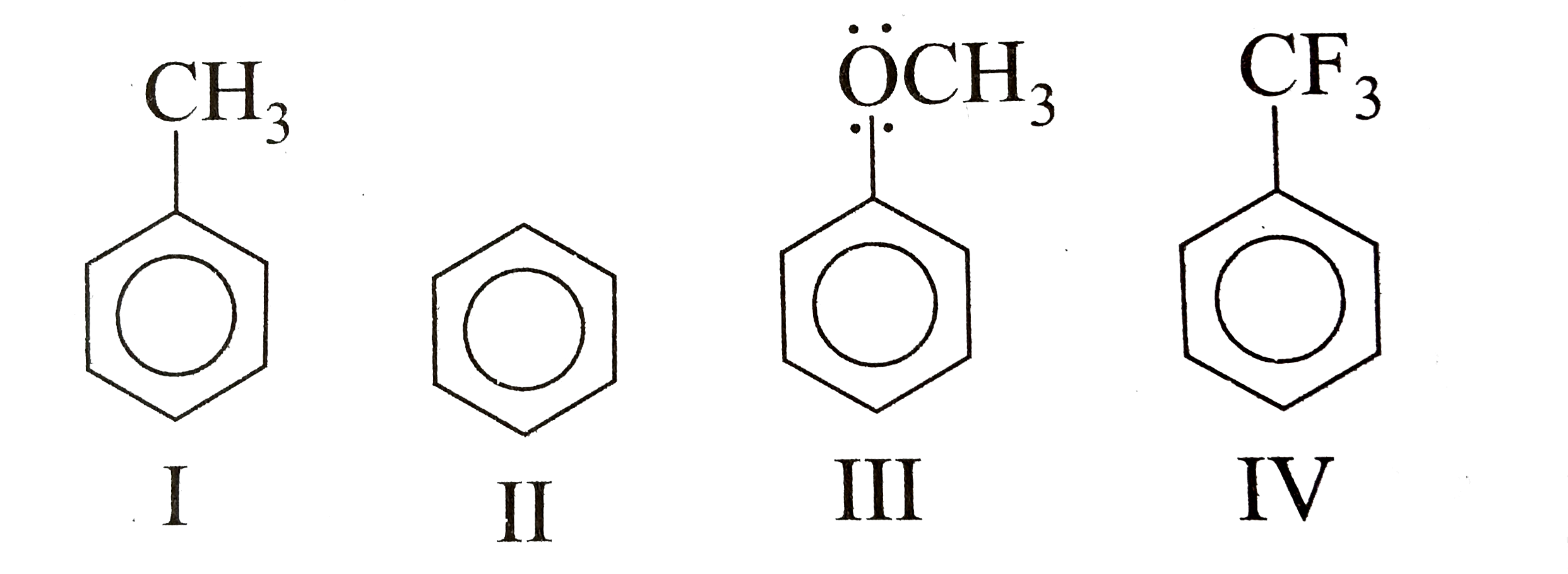Designate the type of each set of H atomes in 6− methyl − hept −2−ene and list them in the decreasing order of reactivity towards radical substitution.
To solve the problem of designating the type of each set of hydrogen atoms in 6-methyl-hept-2-ene and listing them in order of reactivity towards radical substitution, we will follow these steps:
Step 1: Draw the Structure of 6-Methyl-Hept-2-ene
First, we need to draw the structure of 6-methyl-hept-2-ene. The molecular formula can be deduced from the name:
- "Hept" indicates a 7-carbon chain.
- "2-ene" indicates a double bond between the second and third carbons.
- "6-methyl" indicates a methyl group (CH₃) attached to the sixth carbon.
The structure can be represented as:
CH3∣CH3−CH−CH=CH−CH2−CH2−CH3
Step 2: Identify the Types of Hydrogen Atoms
Next, we will identify the types of hydrogen atoms based on their positions:
- Position A: The hydrogen atoms attached to the carbon adjacent to the double bond (1° allylic).
- Position B: The hydrogen atoms attached to the carbon involved in the double bond (vinylic).
- Position C: The hydrogen atoms attached to the carbon next to the double bond (2° allylic).
- Position D: The hydrogen atoms attached to a carbon that is connected to two other carbons (2°).
- Position E: The hydrogen atoms attached to a carbon that is connected to three other carbons (3°).
- Position F: Similar to A, these are also 1° allylic.
Step 3: Classify Each Set of Hydrogen Atoms
Now we classify the hydrogen atoms:
- A: 1° allylic
- B: Vinylic
- C: 2° allylic
- D: 2°
- E: 3°
- F: 1° allylic
Step 4: Determine Reactivity Order
The reactivity of hydrogen atoms towards radical substitution is influenced by the stability of the resulting radicals. The order of stability is:
- 3° > 2° > 1° > vinylic
Thus, the decreasing order of reactivity towards radical substitution will be:
1. E (3°)
2. C (2° allylic)
3. D (2°)
4. A (1° allylic)
5. F (1° allylic)
6. B (vinylic)
Final Order of Reactivity
So, the final order of reactivity towards radical substitution is:
1. E (3°)
2. C (2° allylic)
3. D (2°)
4. A (1° allylic)
5. F (1° allylic)
6. B (vinylic)
First, we need to draw the structure of 6-methyl-hept-2-ene. The molecular formula can be deduced from the name:
- "Hept" indicates a 7-carbon chain.
- "2-ene" indicates a double bond between the second and third carbons.
- "6-methyl" indicates a methyl group (CH₃) attached to the sixth carbon.
CH3∣CH3−CH−CH=CH−CH2−CH2−CH3
Step 2: Identify the Types of Hydrogen Atoms
Next, we will identify the types of hydrogen atoms based on their positions:
- Position A: The hydrogen atoms attached to the carbon adjacent to the double bond (1° allylic).
- Position B: The hydrogen atoms attached to the carbon involved in the double bond (vinylic).
- Position C: The hydrogen atoms attached to the carbon next to the double bond (2° allylic).
- Position D: The hydrogen atoms attached to a carbon that is connected to two other carbons (2°).
- Position E: The hydrogen atoms attached to a carbon that is connected to three other carbons (3°).
- Position F: Similar to A, these are also 1° allylic.
Now we classify the hydrogen atoms:
- A: 1° allylic
- B: Vinylic
- C: 2° allylic
- D: 2°
- E: 3°
- F: 1° allylic
The reactivity of hydrogen atoms towards radical substitution is influenced by the stability of the resulting radicals. The order of stability is:
- 3° > 2° > 1° > vinylic
1. E (3°)
2. C (2° allylic)
3. D (2°)
4. A (1° allylic)
5. F (1° allylic)
6. B (vinylic)
So, the final order of reactivity towards radical substitution is:
1. E (3°)
2. C (2° allylic)
3. D (2°)
4. A (1° allylic)
5. F (1° allylic)
6. B (vinylic)
Topper's Solved these Questions
- BOOK - CENGAGE CHEMISTRY ENGLISHCHAPTER - ALKENES AND ALKADIENESEXERCISE - SOLVED Example62videos
ALKENES AND ALKADIENES
- BOOK - CENGAGE CHEMISTRY ENGLISHCHAPTER - ALKENES AND ALKADIENESEXERCISE - EXERCISES29videos
ALKENES AND ALKADIENES
- BOOK - CENGAGE CHEMISTRY ENGLISHCHAPTER - ALKANES AND CYCLOALKANESEXERCISE - Archives13videos
ALKANES AND CYCLOALKANES
- BOOK - CENGAGE CHEMISTRY ENGLISHCHAPTER - ALKYNESEXERCISE - Exercises (Archives - Analytical and Desriptive Type)4videos
ALKYNES
Similar Questions
Knowledge Check
- Question 1 - Select One
Arrange the following in decreasing order of reactivity towards EAS (electrophilic aromatic substitution)
 Aa gt b gt cBc gt b gt aCa gt c gt bDc gt a gt b
Aa gt b gt cBc gt b gt aCa gt c gt bDc gt a gt b - Question 2 - Select One
Among the compounds the order of decreasing reactivity towards electrophilic substitution is :
 AII>I>III>IVBIII>I>II>IVCIIIgI>IV>IIDII>I>IV>III
AII>I>III>IVBIII>I>II>IVCIIIgI>IV>IIDII>I>IV>III - Question 3 - Select One
Different hydrogen in
ACH3CH=BCH−CCH2−DCH2−ECHF(CH3)2
are represented by alphabets. Arrange them in decreasing order of reactivity towards radical substitution.AC>A>E>D>F>BBF>B>A>C>D>ECB>C>A>F>D>EDA>B>C>D>E>F
Given all the three compounds. Arrange them in decreasing order of reactivity towards electrophile.
 View Solution
View SolutionWhich of the following compounds are not arranged in order of decreasing reactivity towards electrophilic substitution
View SolutionConsider the following compounds
(i) C6H5COCl

The correct decreasing order of their reactivity towards hydrolysis isView SolutionDecreasing order of reactivity of HX in the reaction
ROH+HX→RX+H2OView SolutionThe decreasing order of reactivity of given compound towards nucleophilic substitution with aqueous NaOH is :
 View Solution
View Solution


